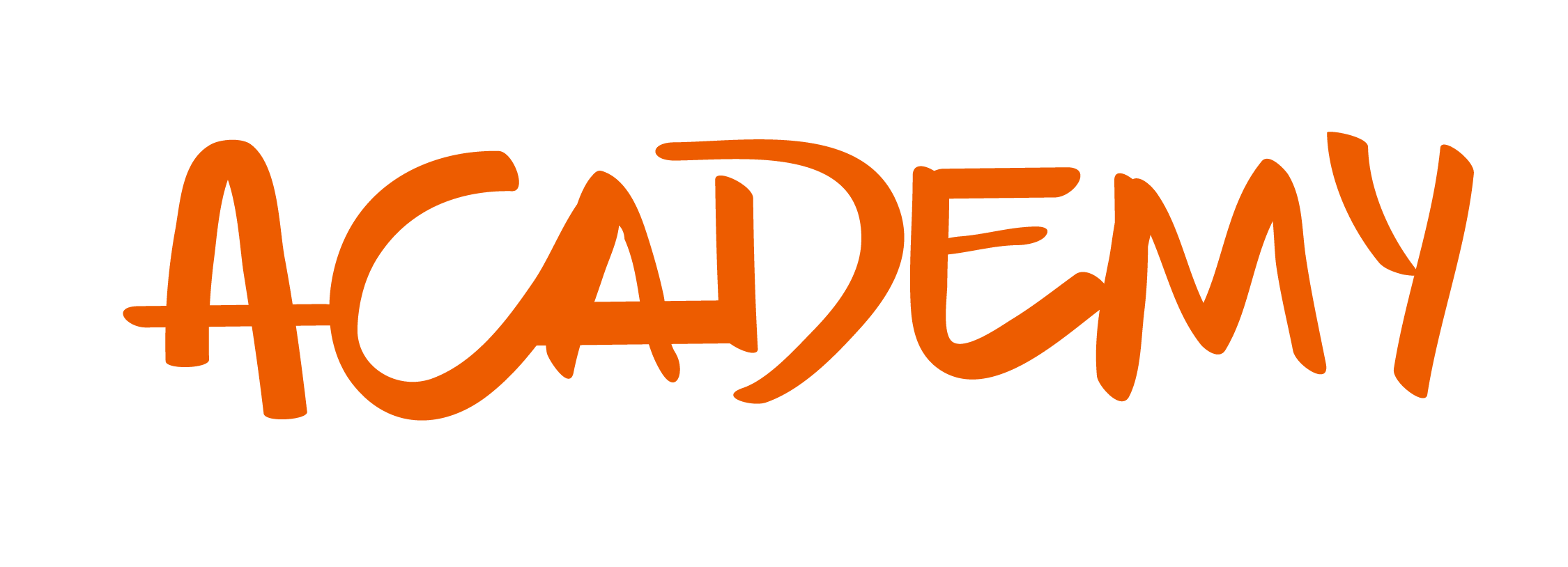A comprehensive employee retention program is a key differentiator in tight talent markets. Reduce employee turnover, retain top talent and establish an engaged workforce.
Working life has changed since the COVID-19 pandemic. It has become more challenging than ever to attract talent in the agency business. In a tightening job market with plenty of implications for businesses of all sizes, it has been particularly stressful for managers who are fighting to keep the company culture while fighting and adapting to the loss of talent and the always-changing technologies that defy everyone to be updated. Therefore designing a good work environment and retention strategies are in the best interest of everyone, from small business owners to large enterprises.
Employee retention should always be a priority. A staggering 35% of employees may leave their jobs each year by 2023. And with the employee benefits coming from remote work, employees have now a wider range of potential employers to evaluate from.
HR leaders need to develop new employee engagement strategies that can positively impact team members and keep retention rates. With open feedback channels, building a culture of recognition, and flexible work conditions, then you can boost your retention efforts this year and other ones to come.
The cost of losing talent is great and the wound may be tough to heal. SHRM estimates that it costs between $20.000 to $30.000 in recruiting and training expenses to replace a manager. This doesn´t even account for losses in terms of interview time, knowledge, productivity, or cultural impact. Low retention rates also impact motivation, productivity, and performance. Before employees quit, they may become less of a team player, do the minimum amount of work, and fail to commit to long-term deadlines.
HR isn´t powerless against this though – 77% of the reasons behind employee departures are preventable. The key is to pinpoint the reasons that may be driving employees to leave and seek out their professional development elsewhere.
Employee Retention Definition
It’s the ability of an organization to keep its employees under contract, making for a more stable and productive workforce. Companies that are serious about retaining their talent establish policies and programs aiming at reducing employee turnover. Those that succeed in achieving high employee retention rates operate at an advantage both in meeting business goals and in recruiting new hires. How important is it to retain an employee whose skill sets you can rely on, that kind of peace in someone good at what he or she does is invaluable.
A well-established, well-executed employee retention strategy I the key competitive differentiator, as a company’s ability to hold on to its talent, especially in tight hiring markets, has profound ramifications for its ability to operate at a high level, without disruptions of any high turnover rate may bring.
Creating the Ideal Workplace
An ideal workspace is more than benefits and competitive pay. To not only draw in the right candidates for new positions, but to retain your valued employees, a defining factor for employee success lies in the workplace culture. Making sure that your employees feel supported and inspired to come to work every day will help employee retention and drive loyalty to your company or agency. It’s also important to keep in mind that an ideal work environment might differ from generation to generation, so being flexible is key.
We’ve found the top things that drive employee engagement and make your company attractive to potential candidates:
-
Competitive Pay
While this may seem like the most fundamental aspect of any job, it’s amazingly common for small businesses to offer compensation based on what they think a role is worth, not the actual going rate. Do your research before posting the position: if the going rate in your area is U$10 an hour, you won´t stand out if you offer less, even if it happens to be above the minimum wage.
-
Benefits Package
Additionally, keep in mind that benefits are hardly considered a perk anymore; they’re a business necessity. Offering a solid benefits package to potential hires could be the deciding factor for them to go with your agency or company, or not, and you also care for your employee’s well-being outside of work. This includes items such as health insurance, a commuting reimbursement, and discounted cell phone plans.
-
Encourage Work/Life Balance
The average full-time employer will spend over 1/3 of their life working. That’s over 90.000 hours. Because of this, it makes sense that employees are often just as concerned about their work/life balance as they are about their pay. Keep in mind that if you’re hoping to attract new employees or keep your current staff happy, you should take into account their personal lives as well as their work life. Maybe one of your employees is a single parent that needs to be home in time to meet their child’s school bus, or maybe they’re commuting an hour plus to work every week, and it’s draining their family time. Offering flexibility, like flexible hours or work-from-home benefits, can improve morale and may make your business more attractive to potential hires.
-
Offer professional Development
No one takes an entry-level job hoping that they´re going to be doing the same base-level gruntwork for the rest of their career. Offering employees paths to upward mobility shows that you care for their professional development and their success.
Employees appreciate knowing that their bosses are committed to them succeeding and growing, and business benefit from the education and skills these employees bring to the business. Take the time to research professional development courses you could offer your employees to teach them more advanced skills they can use to push themselves further and further in the business.
-
Be creative with incentives
As a small business owner, you may not be able to offer workplace perks like a cafeteria or a gym in your office like some larger corporations do, but you can still do small things to keep your employees happy. Consider providing a catered team lunch once a month or providing fitness trackers or coupons to local gyms to encourage a healthy lifestyle. Little things like this can help you motivate your employees and show them that you recognize their efforts and are thankful they’ve decided to join your team.
-
Recognize your employees
Recognizing success is hugely important to employees. At the end of the workday, most employees want to know that the time and effort they’ve put in means something, especially when they’ve gone above and beyond. incentive programs inspire employees to outperform and are also a huge draw for prospective employees. Think about creating a system that rewards employees for going above and beyond – say a points program they can exchange. for cash or prizes.
-
Communication and Input
The most qualified people to provide input on your company are the employees themselves! Employee engagement surveys, especially when done anonymously and securely, are a great way to gain valuable feedback on aspects of your company you may not see as the owner or manager. However, gathering feedback I only useful if you adjust and react accordingly.
-
Offer feedback
Similarly, make sure that you are transparent and open with your employees. Often employees feel they are not getting enough feedback or that the feedback they are receiving is not helpful to them. Set clear expectations and let your staff know they can come to you with questions if they’re unclear on those expectations. A common practice is to conduct year en performance reviews. However, a lot goes on in the year that both you and your employee may forget by the end of the year. Consider setting up weekly 1:1 meetings or structure reviews so they are quarterly, giving you and your employee more time to connect and receive feedback.
-
Offer a shared vision
Employees want to work for an agency that shares their values and motivates them to work their hardest. As a business owner, it’s your job to help employees understand how they contribute to the company´s mission and provide them with reasons – aside from their paychecks – to feel good about showing up to work every day. By doing so, align an employee’s interests with your business, and they´ll be more willing to go the extra mile.
-
Managerial support
Employers often expect loyalty from their employees, but don´t always provide their staff with the support they need to succeed in their workplace. While you can’t promise your team that they´ll never face difficulty at work, employees should feel that they have their manager’s support when dealing with stressful situations. Having someone to turn to when they´re frustrated or stressed is crucial for employees, and giving them support during those times creates loyalty.
Retaining Top Talent
IT departments in particular have been ramping up efforts to retain valuable employees in the face of ongoing talent gap issues, according to CIOs and enterprise hiring managers.
The talent shortage is expected to grow. Ensuring development opportunities and a healthy work-life balance for your start employees must be a concern for your agency. Numerous studies show that recruiting specific talent is more and more difficult. Competition is fiercer than ever.
Consequently, the high commissioners must focus on retaining their employees as they are on hiring new ones if they want to have the talent that they need. Ensuring wellness and job satisfaction for your employees will close the door to them leaving out of discomfort, and make them feel at home.
Achieving high employee retention rates means creating the right culture with competitive compensation and flexible work options. Ensure your working place is the greatest place to be.
Employee retention requires work and multiple strategies to boost retention rates. In this article, we´ll discuss some ideas to give your organization an advantage on this front in today´s war for tech talent.
Strategies for Retaining Top Talent
1) Recognize retention starts with recruiting
Retention starts right from the beginning, from the application process to the screening of applicants to choosing who to interview. It starts with identifying what aspects of culture and strategy you want to emphasize, and then seeking those out in your candidates.
It’s an increasing return model; the longer someone´s with your company, the more productive they become over time. You have to look at this as a long game and take steps to ensure you´re doing it right by making sure each employee is completely engaged with and part of the company´s ongoing success.
2) Identify those characters who’ll stay with the course
How to choose candidates who are more likely to stay? There are key indicators right on their resume. Look for candidates with longevity in their previous jobs.
You’re looking beyond what’s written on the resume. Have they worked on an agency through the ups and downs? That speaks loyalty, perseverance, and engagement. You should also look for someone who plays team sports, who have committed to volunteer or other activities outside of work, something that proves that they have the mindset to commit to something and stick to it, and show that they really care about that activity they do.
3) Identify those who share your outlook
Workers tend to stay longer in an organization where they are aligned with the values, vision, and mission, so identifying them during the recruitment process can pay long-term dividends in terms of retention.
Focus more on identifying candidates for whom your organizational story resonates than just looking at longevity. When top talents feel they have shared values with their employers, it increases the chances that they will stay longer with the organization.
4) Provide ongoing education and clear paths to advancement
Promoting from within not only provides a clear path to greater compensation and responsibility but also helps employees feel they are valued and are a crucial part of the company’s success. So employee development and education are essential.
Providing professional and career development opportunities that are fitted to each individual. This should begin with an assessment, coaching, feedback, and an understanding of one’s specific in-depth strengths, risk factors, and intrinsic motivators. Once IT learning and development specialists are clear on these, and the individual is self-aware through coaching, then the development should be molded to fit the needs, profiles, and goals of each individual.
She says studies show that millennials and GenZers crave career and professional development, with several studies suggesting that 80% or more of them would leave a company that doesn´t offer personal development opportunities.
Learning can´t be just an afterthought, it must be a core focus of any strong organization; adding a commitment to training is seen by employees as an investment in their worth and a powerful incentive to stay at the agency.
Investing in your employee´s education can help retain the talent and intellectual property at a time when there´s stiff competition for both. The need for a new skill set and evolving roles are in demand at a rapidly growing rate, so putting someone on a career path that doesn´t have any room to develop is not only a career-limiting move for the employee but a business-limiting move for the company.
5) Stick with remote work options
One way to retain your talent is to let them stay remote: focus on flexibility. Employers in general will have to adopt that attitude if they want to keep their workers.
The pandemic demonstrated that long-term remote work is possible from a recruitment and retention perspective providing increased flexibility for work hours and location of work help increase employee satisfaction, which leads to retention, along with increasing an employer´s competitiveness and attraction to land top talent.
6) Be competitive with compensation packages
Widescale remote work also means all employers are competing with everyone else, so salary is adjusted to the highest bidders.
Leaders must review pay scales to ensure they´re as competitive as needed to retain talent, adding loyal workers that expect to be rewarded for staying and not feel like all the bonus pay is going only to new workers.
William says he regularly reviews existing workers’ pay to ensure it’s fair, competitive, and equitable throughout his organization, ensuring that each individual is being paid for the role they´re in separate from any individual attribute unique to them.
Pay, though, is only a small fraction of the equation. Compensation benefits, work environment, opportunities for development, reward designs, it all matters. If a highly talented employee isn´t satisfied, he or she can merely walk across the street for a new and better opportunity. This is particularly true in a virtual world, post-COVID pandemic, where they are no geographic restrictions.
7) Deliver for your employees
Know what your employees want and be prepared to meet them.
It is fair to say that candidate expectations are changing. For instance, people are looking for organizations that can provide flexibility in a way that meets their individual needs and preferences. This is true whether they are a candidate or a current employee. If an organization isn´t able to provide flexibility, that could make it difficult to retain talent.
Recognizing that people are multidimensional is key in order to be able to accompany them, whether that´s through flexibility, a wide range of benefits, financial stability, or meaningful projects to keep them engaged.
8) Engage your Workers
Leaders would do well to connect with their workers to update them on the organization and its direction and to get their feedback.
Leaders may have found that their technological managers have handled their interactions during the pandemic with technical employees that can impact an employee’s view of the company and their role and job satisfaction. Most employees leave their position because of satisfaction with their manager, if there have been past management issues and an employee felt the employer did a poor job of engaging and handling the workforce during the pandemic, they may be more likely to leave.
Moreover, employers may want to conduct stay interviews with employees to help them understand any concerns an employee may have, and come up with ways to address those concerns.
Adding things up, employees should be invited into sessions. They would want to know what is going on with strategy, competition, financials, and the business outlook. Include them and ask them questions. They will appreciate feeling like partners in the enterprise.
Another approach is to use an employee polling tool to get the pulse of staff´s attitude to their work and the organization´s overall vision.
9) Put data to work
Organizations have an incredible amount of employee data available that they can use to identify who´s most likely to leave, why they might jump ship, and then take steps to prevent that.
Looking more closely at the data can help uncover patterns, potentially contradicting conventional wisdom. AI and machine learning can help to identify and address these issues before they lead to attrition and turnover.
10) Be prepared for turnover
Of course sometimes turnover is inevitable, so organizations must be prepared to lose top talent.
It´s difficult when we lose someone who’s a rockstar, but it’s also healthy for people to move on. You don´t want someone who doesn´t want to be there anymore.
Here, succession planning can be key, especially for high-level or hard-to-hire positions. So to maintain a high profile.
Be active in events, local chambers, and written publications, and overall have a strong presence. Be visible and become the employer of choice.
Why do you need to retain talent instead of replacing it?
First of all, there are hard direct costs associated with terminating an existing employee as well as hiring a new one. The average cost of replacing an employee varies between 30% and 150% of their salary according to Harrison HR. You´ll need to factor in the initial hiring costs, training & induction costs for the new employee, and termination administration costs for the existing employee. To round up, a long and tedious bureaucratic process.
Secondly, when you hire a new employee they will have to learn about your company culture and work environment, this is a soft cost as while it doesn´t directly take cash out of your pocket, it does so indirectly. This process might take up the first few months of their employment in which they are not fully productive for your business. This can be hard to estimate, but can often have a substantial impact on your bottom line.
Thirdly, there is no guarantee that a new hire will add value or stay with your company for a long time. Even if they´re an excellent fit, there´s no way to tell how things will be down the track which presents a very real business risk. If things don´t turn out well with your new employee, then you´ll have to go through the process of rehiring all over again.
Another consideration to take into account is the cost of hiring a replacement employee. For instance, what will happen with their current role while you´re recruiting and training them? And how long can they be out of their current role before it starts to affect your customers and ultimately your business operations? This opportunity cost is likely to have the most significant impact on your profits, especially if your business is in a highly competitive industry or region.
The cost of retaining an existing employee may seem higher than replacing them initially, but over the long term retention strategies like offering an increase in remuneration could turn out to be a much better investment. The bottom line is that retaining good employees rather than replacing them is almost going to benefit businesses in the long run. If you keep finding, painting, and building on your talent within your organization, then success will surely follow.
Conclusion
Today the job market is driven by the candidate, not the business, which is why it’s important to make your business stand out. While not every day will be ideal, and every workplace will have problems arise, it´s important that the perks of your small business outweigh the bad. As a small business owner, you have the power to develop a truly ideal workplace for your employees and make them enjoy their stay while enjoying having them around and their skills to make your life easier.
As mentioned before, it´s wiser to retain your talent than to be forever hiring new employees. Ensure that by giving those conditions that are a must in every agency or company in modern work life. Loyalty is gained slowly from this and from having an interest in your employee, besides their work. But life is life, and change is a fact, a currency in every human being, so be prepared for turnover.














